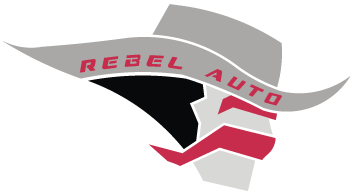Steering Problems? Check the Front Alignment!
Has your car started drifting to the side of the road as you're driving down a straight road? Or have you noticed that the steering wheel is hard to hold in a firm position (there is too much "play" in it)? An experienced auto repair technician should endeavor to pinpoint the specific problem by inspecting the candor and castor of your front alignment, as well as take your vehicle for a road test before recommending a solution. This will ensure that the correct service can be performed-whether it's to correct the front alignment or a simple wheel balancing.
When it's time to diagnose steering problems, there are four different issues to consider:
- Tire problems:
- Make sure all four tires are inflated to the recommended pressure.
- Make sure that the tread and tire size are the same on both front wheels.
- Check for unusual tread wear or damaged tires.
- Front alignment: Check these three aspects of a front alignment for rear-wheel drive vehicles:
- Toe-in -- The front of each tire, when driving straight, points slightly to the centerline of the vehicle. Each tire should have equal traction (also called "bite") when cornering.
- Castor – This is the vertices angle of the tire's centerline from front to back, and should not vary much unless other components are seriously worn.
- Camber -- The vertical angle of the centerline of the tire perpendicular to the cross-section of your car.
- Road test: Go for a drive on a level straight road on a calm day:
- Loosen your grip on the steering wheel and let the car proceed on its own. If it pulls to the left or the right, a car alignment or wheel balancing may be necessary.
- Scraping, whining, or grinding sounds coming from the front of the car may indicate excessive friction as the tire tread rubs against the road.
- Have someone follow you to observe the back to car alignment. The front wheels should be tracking in the same groove as the back.
- Treadwear: Excessive or unusual tread wear could also be caused by:
- Worn struts or shock absorbers.
- Worn out or loose wheel bearings, damaged gearbox, tie-rod ends, ball joints, upper and lower control arm bushings, and other steering components.
- Uneven distribution of heavy loads.
- Poor driving habits--hard cornering, braking, or swerving.
Need a simple wheel balancing to correct steering problems? If you are unsure about a car alignment problem, contact our ASE certified technicians at Rebel Automotive or go online to https://www.rebel-auto.com for more information. We will be pleased to take care of your vehicle and provide you with honest and professional repair and maintenance. Our auto shop serves vehicle owners in Henderson, NV, Las Vegas, NV, and North Las Vegas, NV.
Steering Problems? Check the Front Alignment! If you are experiencing steering problems, a simple Wheel Balancing may be all that is needed. Or, it could be due to a Front Alignment problem. Have it checked out!Has your car started drifting to the side of the road as you're driving down a straight road? Or have you noticed that the steering wheel is hard to hold in a firm position (there is too much "play" in it)? An experienced auto repair technician should endeavor to pinpoint the specific problem by inspecting the candor and castor of your front alignment, as well as take your vehicle for a road test before recommending a solution. This will ensure that the correct service can be performed-whether it's to correct the front alignment or a simple wheel balancing.
When it's time to diagnose steering problems, there are four different issues to consider:
- Tire problems:
- Make sure all four tires are inflated to the recommended pressure.
- Make sure that the tread and tire size are the same on both front wheels.
- Check for unusual tread wear or damaged tires.
- Front alignment: Check these three aspects of a front alignment for rear-wheel drive vehicles:
- Toe-in -- The front of each tire, when driving straight, points slightly to the centerline of the vehicle. Each tire should have equal traction (also called "bite") when cornering.
- Castor – This is the vertices angle of the tire's centerline from front to back, and should not vary much unless other components are seriously worn.
- Camber -- The vertical angle of the centerline of the tire perpendicular to the cross-section of your car.
- Road test: Go for a drive on a level straight road on a calm day:
- Loosen your grip on the steering wheel and let the car proceed on its own. If it pulls to the left or the right, a car alignment or wheel balancing may be necessary.
- Scraping, whining, or grinding sounds coming from the front of the car may indicate excessive friction as the tire tread rubs against the road.
- Have someone follow you to observe the back to car alignment. The front wheels should be tracking in the same groove as the back.
- Treadwear: Excessive or unusual tread wear could also be caused by:
- Worn struts or shock absorbers.
- Worn out or loose wheel bearings, damaged gearbox, tie-rod ends, ball joints, upper and lower control arm bushings, and other steering components.
- Uneven distribution of heavy loads.
- Poor driving habits--hard cornering, braking, or swerving.
Need a simple wheel balancing to correct steering problems? If you are unsure about a car alignment problem, contact our ASE certified technicians at Rebel Automotive or go online to https://www.rebel-auto.com for more information. We will be pleased to take care of your vehicle and provide you with honest and professional repair and maintenance. Our auto shop serves vehicle owners in Henderson, NV, Las Vegas, NV, and North Las Vegas, NV.
